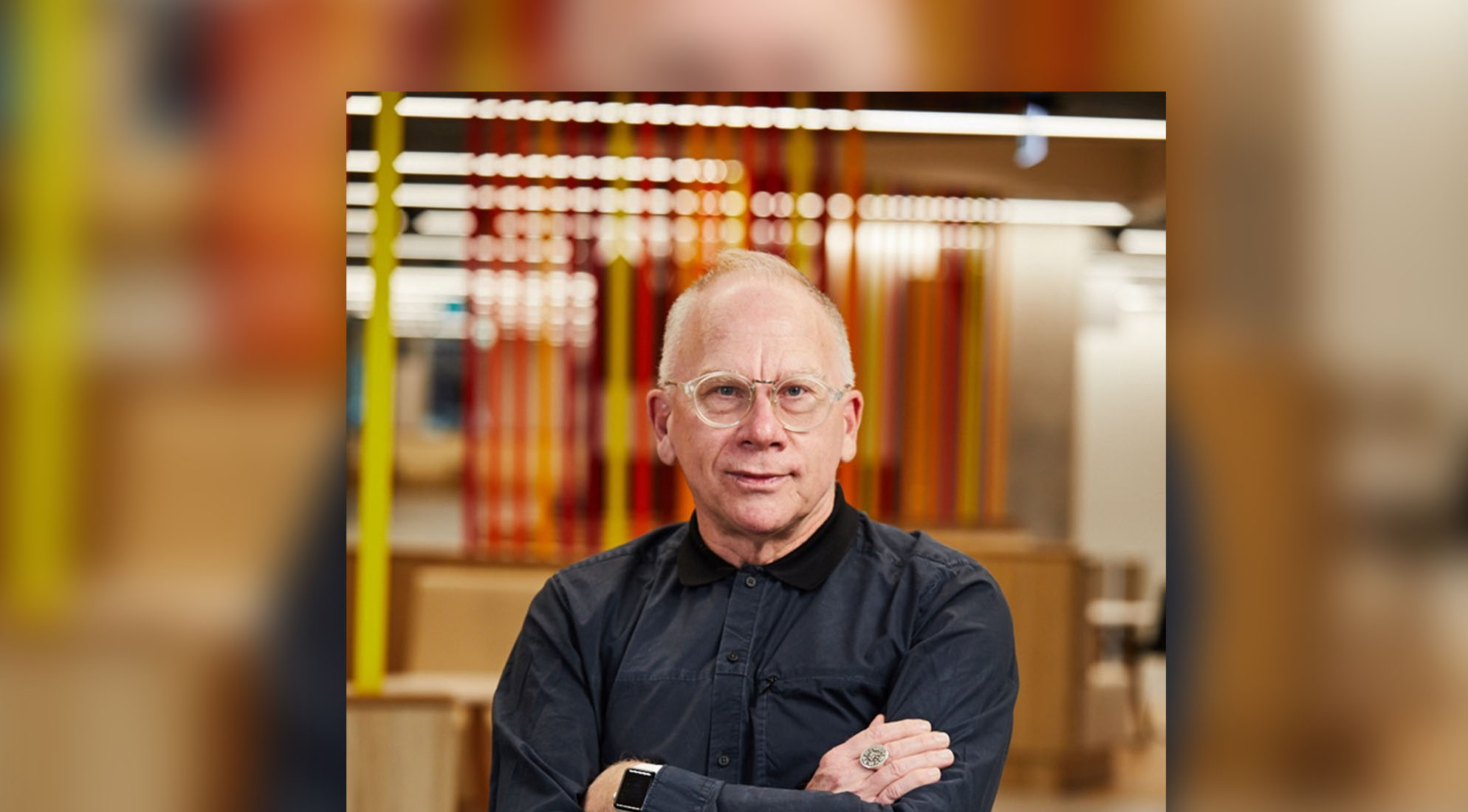
UNSW Art & Design Associate Professor Vaughan Rees remembers being struck by India’s richness of colour when he first visited India.
The artist was “about 18 or 19” and had travelled from Cairns in Far North Queensland “as a hippy, of course, as most people of my generation did”.
He recalls being in an area that was a centre for textiles in the north-west of the country, watching “two or three thousand women on a river, washing colour fabric”.
“There would be thousands of people washing out fabric into the river, and now we would go ‘oh, that’s dangerous, all the poison’.
“But then it was just the most beautiful scene.
“The darkness everywhere, the soil and the water, and then thousands of metres of golden yellow and golden orange and blues and then hanging them all up, it was just fantastic.”
The artist travelled from the north of the country to Kerala, “which was like my home town Cairns, tropical and hot”.
As Associate Dean of International & Engagement at UNSW Art & Design, he has since travelled to India about seven more times, although now it’s mainly to Ahmedabad, Mumbai and Delhi with his work at UNSW.
The art and design educator has taught drawing for 43 years and most recently ran a series of drawing and creative thinking masterclasses in Jaipur.
The classes were for secondary school students seeking to study art and design courses at highly-ranked foreign universities.
“India is always wonderful because whatever you’re told about what you are going to do, you know that it possibly is not what is going to happen,” he says.
As there were riots at the time, the masterclass quickly turned into a lecture for “20 people for 20 minutes”.
But then he walked into a high school assembly room “where 120 students with paper and pencils were waiting for their two hour masterclass”.
“These students are speaking in their third and fourth language and they are so articulate and so bright and so insightful, so respectful and just wanting to know so much about the world, it’s fascinating,” he says.
The artist says he took a few students by surprise when, in an attempt to “describe things visually”, he jumped on a table.
“You know, in India, a 60-year-old academic doesn’t jump onto a table in a class, he respectfully stands at the front of the room”.
But he says he died with embarrassment when students lined up to kiss his feet.
“They have this tradition, they respect their teacher, they kiss the foot,” he says.
“So I was so embarrassed and nearly dying with all of that, but it’s their way, I’m in their country, I have to understand their culture and respect it.
“But I did tell the teacher that if they all come through and kiss my feet, we’ll have no time left to draw, so can you call an end to this?”
The practising artist draws “fine art and other times I do illustrations, renderings for fashion and interior, a whole range of art and design related visual outcomes”.
He has exhibited in Australia, Canada, China, Singapore and the US.
His art explores “how one person interacts in the world” with topics including sustainability, personal consumption, travel, environment and landscape.
Amit Desgupta, India country director at UNSW, says there seems to be something about India that ignites Associate Professor Rees.
“I haven’t the foggiest clue as to what that is,” he says.
“Could it be the colours or the vibrancy. Perhaps it is just the madness that is so often in India.”
Associate Professor Rees says he likes India’s “beautiful, humble optimism”.
“You know how roses are beautiful and they start to get a bit old and they are still beautiful but they start to drop away and turn brown? Indian architecture is a bit like that.
“Hand-laboured work is everywhere … people are so excited there. So visually, sounds, foods, smells, everything is so ‘oh, ah, great’. It is alive.”
He favours the northwest “because of their textiles and they’ve got the most amazing mid last-century architecture there that’s covered in pigeon droppings, but the basic structure is incredible”.
Delhi is “big, busy, dusty and dirty, and just lovely” and then there’s Mumbai which is more “close to the water” and “calm”.
“Then there’s Jaipur with all its pink architecture, people who are so proud to live there and you get those pink buildings against a bright blue sky, it’s just beautiful.”
He says India has a lot to contribute to the world of art and design.
“They’ve got this enormous tradition of handicrafts, so the depth of knowledge of weave and ceramics and jewellery, the hand skills, is just incredible,” he says.
“Dyeing, metal combinations, precious and semi-precious stones, all those kinds of material knowledge, and if you can bring that depth of knowing and merge it with some new technologies, what a potent mix for reimagining and advancing traditions. Indian craftspeople bring that beautiful sensitivity to materials and we find that is a form of intelligence.”
The educator says India is a tolerant country.
“There can be a room filled with so many different religions and they all tolerate each other, they celebrate each other’s holidays, they taste each other’s foods, they all work so together”.
“I think that they can teach us all a lot.”
